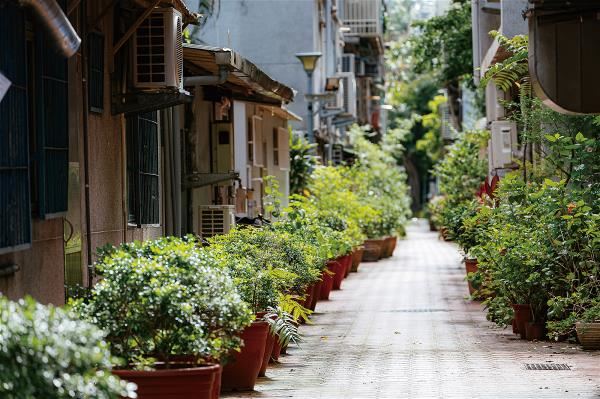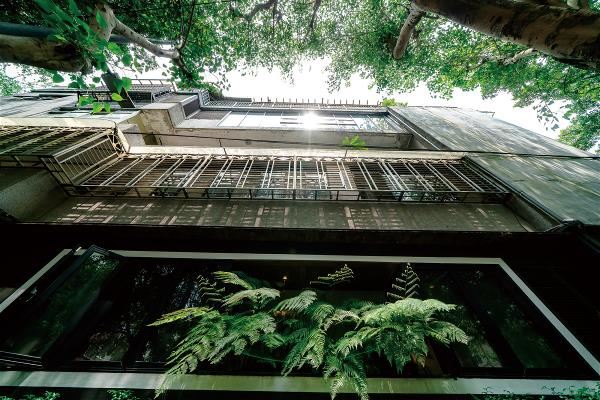2025-7-30
Lynn Su /photo by Lin Min-hsuan /tr. by Jonathan Barnard
(Courtesy of Taiwan Panorama July 2025)
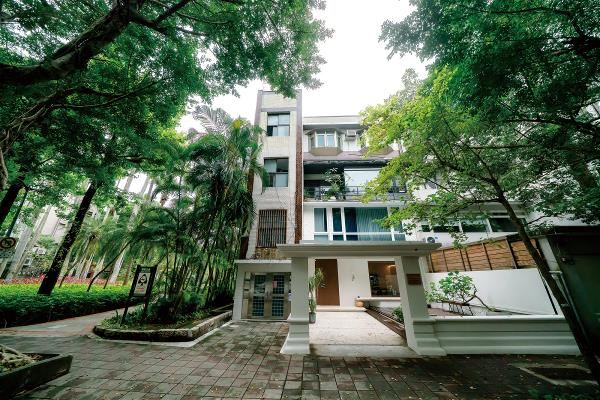
Koreans traveling in Taiwan often post photographs of Taiwanese street scenes on social media with the hashtag #대만감성—Daeman gamseong or “Taiwan sensibility.”
The hashtag is often attached to shots of walkup apartment buildings built at least 40 or 50 years ago, or lush greenery, or colorful neon signage. Sometimes you’ll see cars and motorcycles parked along the side of the road, parks and greenspaces, schools, tree-lined streets, pedestrian overpasses or at-grade railway crossings. They say that this kind of urban scenery is charming, retro, and relaxing.
In Taiwan’s capital city of Taipei there are a bunch of classic “Taiwan sensibility” districts, neighborhoods that draw foreign visitors seeking out such scenes. For instance, there is Wenluoting area (Wenzhou Street and parts of Roosevelt Road and Tingzhou Road) near the campus of National Taiwan University, with its many bookstores, coffee shops and small performance spaces.
There are the streets surrounding the campus of National Taiwan Normal University (NTNU or “Shida”), including Shida Road, Longquan Street, and the strip-shaped Shida Park.
And just a short walk from the NTNU campus is the Yongkang Street commercial district, with famous eateries such as Din Tai Fung, Smoothie House, and Yongkang Beef Noodles.
A short walk from Yongkang Street, meanwhile, brings you to Lishui Street and Jinhua Street, with their many coffee shops and teahouses, along with Qingtian Street and Taishun Street, with their more “lived in” neighborhood character.
These vibrant neighborhoods are made up mostly of four- to five-story walkup apartment buildings. Many of their first-floor units, which feature small courtyard-like spaces in the front, are occupied by shops. Small parks and green spaces are tucked amid the clusters of apartment buildings, creating a pleasant walking environment. Visitors can browse local stores, explore nearby attractions, and get glimpses of the lives lived by locals, such as laundry hanging out to dry or potted plants on the apartment balconies. Places like these exude a quiet charm, rooted in the beauty of community life.
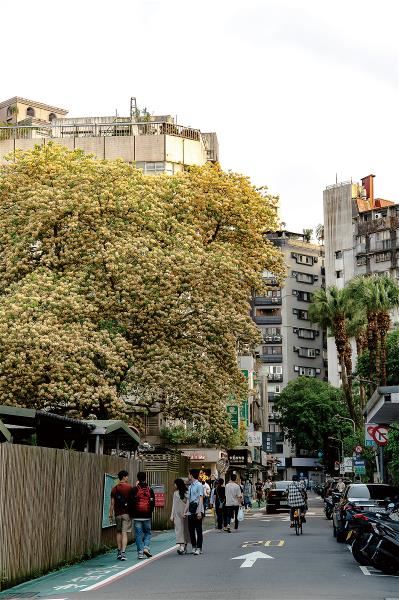
Postwar architecture lab
What gave rise to these neighborhoods full of walkups? Ling Tzung-kuei, author and expert on architectural history, explains that Taiwan’s population exploded after World War II at the same time as farmers moved to cities to work in factories. Those concurrent trends fostered great demand for urban housing.
Back then there were few high rises with elevators, but there was much experimentation with these low-rise walkups. Some of the more unique among them have today even become attractions in themselves.
At places such as the public housing complex of Nanjichang, with its spiral staircases and garbage ducts, some of the then-latest construction techniques were introduced from the West. More recently, the French director Luc Besson used the complex as one of the settings for Lucy, as did Taiwanese director Chen Yu-shun for Hippocamp Hair Salon.
Off Jilin Road in Zhongshan District you’ll find the Jichedao Gongyu (literally “motorcycle ramp apartments”), an apartment building whose stairwell features a spiral ramp for two-wheeled vehicles. It is rather noisy, but in this era of food delivery it makes life even more convenient. The architecture scholar Lee Ching-chih describes it as “a work of architecture representative of Taiwan’s motorcycle culture.”
The Huajiang Residences in Wanhua District were designed by a group of renowned architects of the first generation after World War II, including Haigo Shen, Chen Qikuan, Huang Baoyu, Gao Erpan, Yu Yuezhen, and Guo Bingcai. It features an unusual design of four curved buildings connected by pedestrian bridges, and has attracted location scouts for television series such as Living and Your Name Engraved Herein, as well as many music videos.
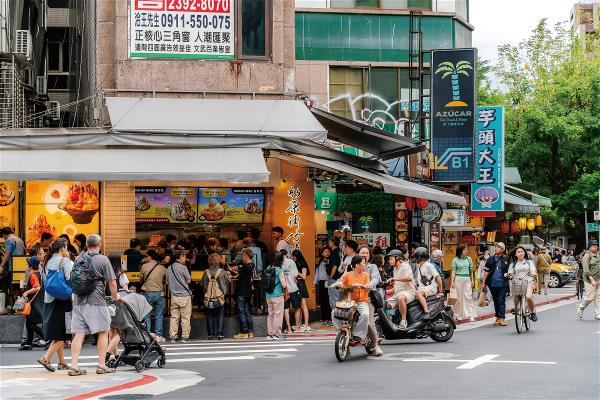
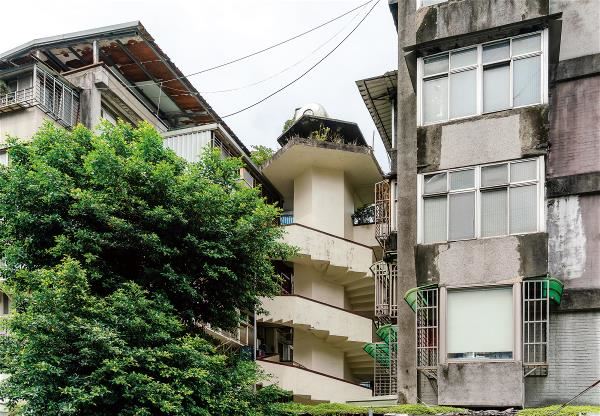
Affordable spaces
Yet these strikingly unusual works of architecture were hard to replicate elsewhere, so ultimately the two-units-per-floor walkup apartment buildings are what came to predominate in Taiwan’s urban neighborhoods, shaping memories of city life down to the present day.
As far as Taiwanese are concerned, these buildings are less about aesthetic sensibility than they are about a sense of comfort and coming home.
Although older folk may dislike the lack of elevators in these buildings, in this era of high-priced housing the apartments themselves have much to commend them: square layouts, ample natural light and ventilation, and a low share of listed square footage taken up by public facilities. Food writer Yeh Yi-lan has said, “It’s not just due to these apartments’ connections to the city’s way of life and history, but also because of their simple, straightforward layouts and their high ceilings—a delightful rarity—that many designers, artists, and photographers have deliberately sought them out as residences.”
There’s much truth in that. Lin Jin-ann, architect and author of Taipei Walkups, wrote her doctoral dissertation on the subject. She describes how Taipei’s walkups are derived from prewar public housing in the West. Those buildings first and foremost helped to solve housing shortages, but there was also much thought given to their interior design.
The exterior walkway apartment buildings frequently seen in Japanese films and TV dramas are typically one-bedroom units with combined kitchens and living rooms, making them suitable for single occupants. In contrast, the most common walkup apartment layouts in Taiwan are those found in twin units on either side of a stairwell, with mirror-image, largely square floor plans that conveniently accommodate three bedrooms, a combined living-and-dining room, and a separate kitchen, sufficient for a small family.
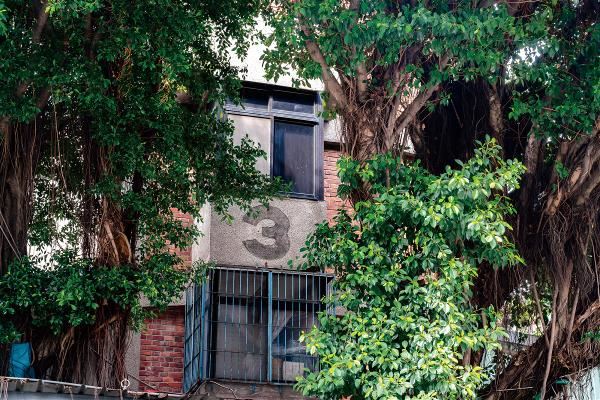
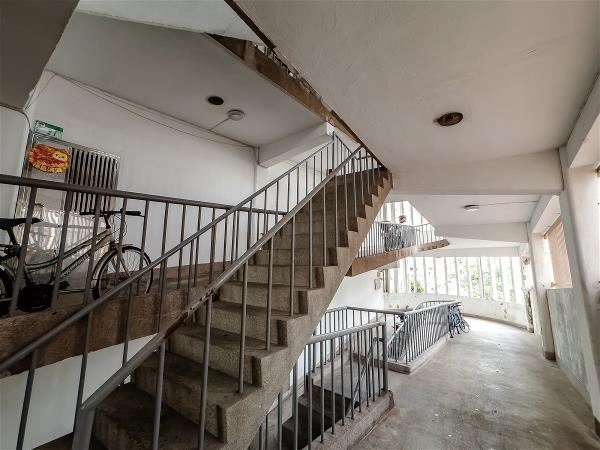
Modernist buildings in colorful clothes
Among the many walkup apartment complexes found in cities throughout Taiwan, the Minsheng Community in Taipei’s Songshan District stands out for its many excellent examples of this architectural type.
We follow Lin from the canyon of tall buildings on bustling Minsheng East Road to an adjacent assemblage of low rises.
Through her architect’s eyes, we discover that although these old apartment complexes (Lianhe New Village, Lianhe Second Village and Guangwu New Village) lack any cutting-edge architectural innovations, their exterior walls are mostly decorated with carefully selected colorful mosaic tiles, dirt-resistant exposed-aggregate concrete, stairwells with round windows, and decorative breeze blocks, giving each building a unique style and prominence of its own.
These decorative flourishes actually went against the then-prevailing modernist principle of form following function. “Compared to similar apartment buildings in the West, where this style originated and where they were typically finished with simple gray rendered exteriors and paired with functional red bricks and colorful doors and windows, in Taiwan they were clad in tile. It’s like wrapping a modernist structure in a colorful coat. The finishing choices were decorative, eclectic, and arbitrary. Seen in this light, the government’s construction of these apartments back then was really about modernizing, not modernism.”
But because Taiwan lacks legally enforceable rules aimed at preserving architectural integrity, it is common to see homeowners remodeling their balconies, windows, and railings according to their own tastes and needs, or repainting or retiling wall surfaces. “What freedom!” says Lin.
Lin emphasizes that Minsheng, with its chessboard-like grid of treelined streets, appropriately sized and continuous sidewalks, and numerous parks interspersed throughout the community, is one of the few communities in Taiwan that actually borrowed US planning norms. Few other residential areas have such advantages.
Unlike Westerners, who typically use their apartment balconies as places to relax, drink tea, and gaze out upon the urban scenery, Taiwanese, thanks to enjoying a favorable horticultural climate where the tropics meet the subtropics, like to install a variety of potted plants on their balconies. Ground-floor residents are often happy to plant trees in their small courtyards, and those living upstairs don’t generally mind the shade either, as all intuitively understand the advantages of lush, green streets.
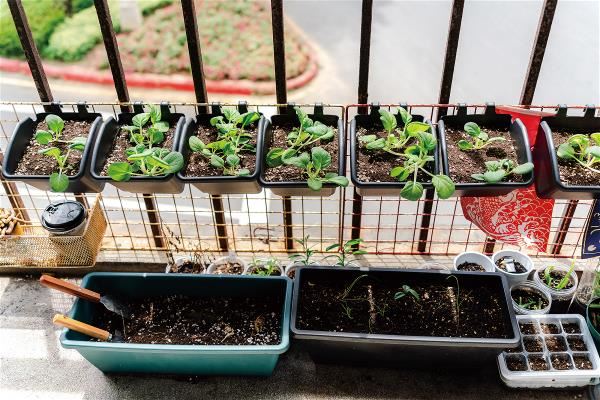
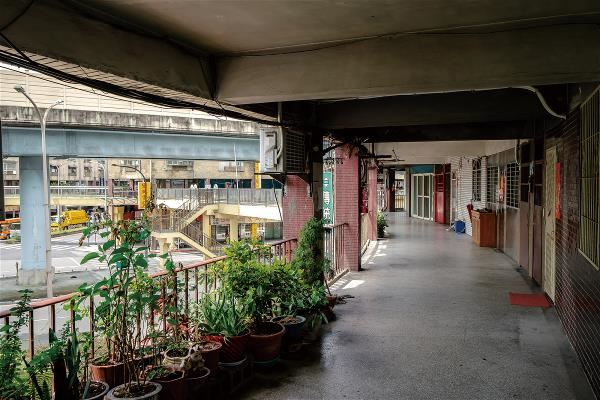
Bearing witness to urban evolution
In truth, there are some flaws associated with these old apartment buildings. For instance, some people criticize these old walkups for their lack of public spaces. But Lin believes, “Walkups are a part of the city.” Give more space to the apartments themselves, she argues, and let the residents go out to enjoy the city’s parks, gyms, theaters, swimming pools, libraries, and other public resources.
Undeniably, though, many of these old buildings have been poorly maintained and look the worse for wear. And because there is no enforcement of architectural standards, they have been altered and added to, becoming quite uneven in appearance.
And yet buildings of this type remain in great numbers throughout Taiwan and plans to redevelop such neighborhoods have often run into the sand. Li Lu-feng, an assistant professor of marketing at Feng Chia University, attributes their resilience to the strong emphasis on private property rights in Taiwan and to people’s attachment to old living environments.
As for the pedestrian overpasses that we often associate with these communities, they are the strange fruit of a prevailing planning conception of their era that the right of way on streets belongs mostly to cars and motorcycles. With greater attention being paid these days to walkability and pedestrian safety, it should come as no surprise that those overpasses have been facing the wrecking ball.
In short, these walkup apartment buildings bear witness to a particular moment in the history of Taiwan’s urban development and contribute today to cityscapes that tourists, ever hungry for the exotic, consider retro and romantic. But in light of how these buildings have been adapted to meet the peculiarities of our climate, customs, laws, and social development, they also reflect the unique realities of Taiwanese people’s lives. Whatever their imperfections, Taiwan’s walkups still have much to offer.
